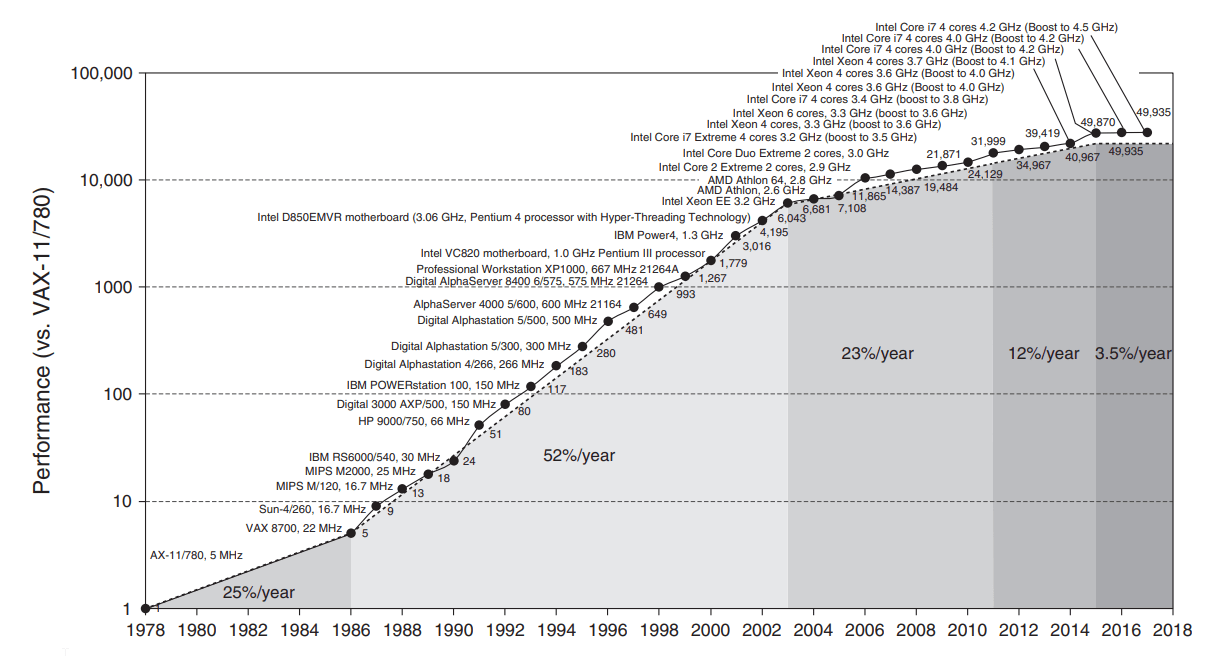Moore's Law [Moore, 1965] has been a guiding principle for the semiconductor industry, enabling 40 years of exponential growth of compute power. Although the limit of transitor density has not plateaud with Gate-All-Around transistors replacing finFETs, its growth curve has declined significantly. Dennard scaling law ended already in 2006. Now, the economy of scale is not to minituarize IC's but stick to older nodes. A complete paradigm shift is needed for computing that scales the next 40 years.
By expanding the number of stable states from two to three, the same amount of computations can be done with less transistors per unit die area thus generating less heat and leakage current. Complexity is reduced as less wiring between logical circuits is needed. Most importantly, the enabling technology is not - like quantum computing - in the far future, but is already commercially available. Modern multi-level-cell (MLC) SSD's don't store one bit per cell, but trap a growing number of discrete charges. With memristors and neuromorphic computing, the classical Von Neumann bottleneck can be broken using extremely low power. Carbon nanotube transistors feature high electron mobility, can be 3 ångström in diameter (some atoms are 1 Å!) and their diameter functions as a variable voltage threshold. Mass production of these multi-valued devices could enable new scaling laws that are directly related to smaller noise margins and higher information density per mm^3.

Figure 1. Historical compute performance. End of Dennard scaling and dusk of Moore's Law (Patterson & Hennessy, 2021. Copyright Elsevier)

Figure 2. The first modern ternary computer: the Setun (source: unknown)
Just like electrical cars were invented before the combustion engine cars in the late 1800's, ternary computers have been invented long before the classical computer chips we now use daily. In 1840 Thomas Fowler build the first mechanical ternary computer to aid his treasury work [Glusker, 2005] and [Shilov, 2009]. Later, in 1958 the first modern ternary computer was build by Russian engineer Brusenzov and his team [Hunger, 2007] at some scale. It did not become popular due to technology readiness, it lacked ternary storage for instance as it "simply" discarded the fourth state. Nevertheless this complex system was claimed to be more reliable, faster and more affordable compared to its binary counterpart. To this day, ternary computing and multiple valued logic receives stable international interest as recorded in the proceedings of the oldest conference on MVL, ISMVL.
With modern technology in place, ternary computers are ready to disrupt virtually every sector. History has proven that sectors like the automotive industry, food, defense and space, finance and healtcare all benefit from smaller, more energy efficient and more powerful chips. This website will link old and new research from both our research group and fellow researchers in the field to make ternary computing a reality. The world is is not binary, it is analog.
